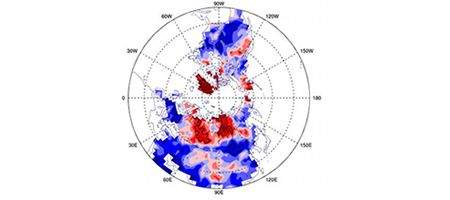Colder-than-usual winters in the US and Europe could be caused by the shrinking of ice cover in the Arctic.

Since the level of Arctic sea ice hit a record low in 2007, there’s been much more winter snow cover in large parts of the northern US, northwestern and central Europe and northern and central China.
“Our study demonstrates that the decrease in Arctic sea ice area is linked to changes in the winter Northern Hemisphere atmospheric circulation,” says Judith Curry, chair of the School of Earth and Atmospheric Sciences at Georgia Tech.
“The circulation changes result in more frequent episodes of atmospheric blocking patterns, which lead to increased cold surges and snow over large parts of the northern continents.”
The team analyzed observational data collected between 1979 and 2010 and found that a decrease in autumn Arctic sea ice of one million square kilometers corresponded to the greaterincrease in winter snow cover.
They discovered two major factors that could be the cause – changes in atmospheric circulation and in atmospheric water vapor content. It seems that strong warming in the Arctic through the late summer and autumn could be enhancing the melting of sea ice.
“We think the recent snowy winters could be caused by the retreating Arctic ice altering atmospheric circulation patterns by weakening westerly winds, increasing the amplitude of the jet stream and increasing the amount of moisture in the atmosphere,” says senior research scientist Jiping Liu.
“These pattern changes enhance blocking patterns that favor more frequent movement of cold air masses to middle and lower latitudes, leading to increased heavy snowfall in Europe and the Northeast and Midwest regions of the United States.”
Simulations showed that diminishing Arctic sea ice caused a significant surface warming in the Arctic Ocean, Greenland and northeastern Canada, with cooling over northern North America, Europe, Siberia and eastern Asia.
The models also showed above-normal winter snowfall in large parts of the northern US, central Europe, and northern and central China.






